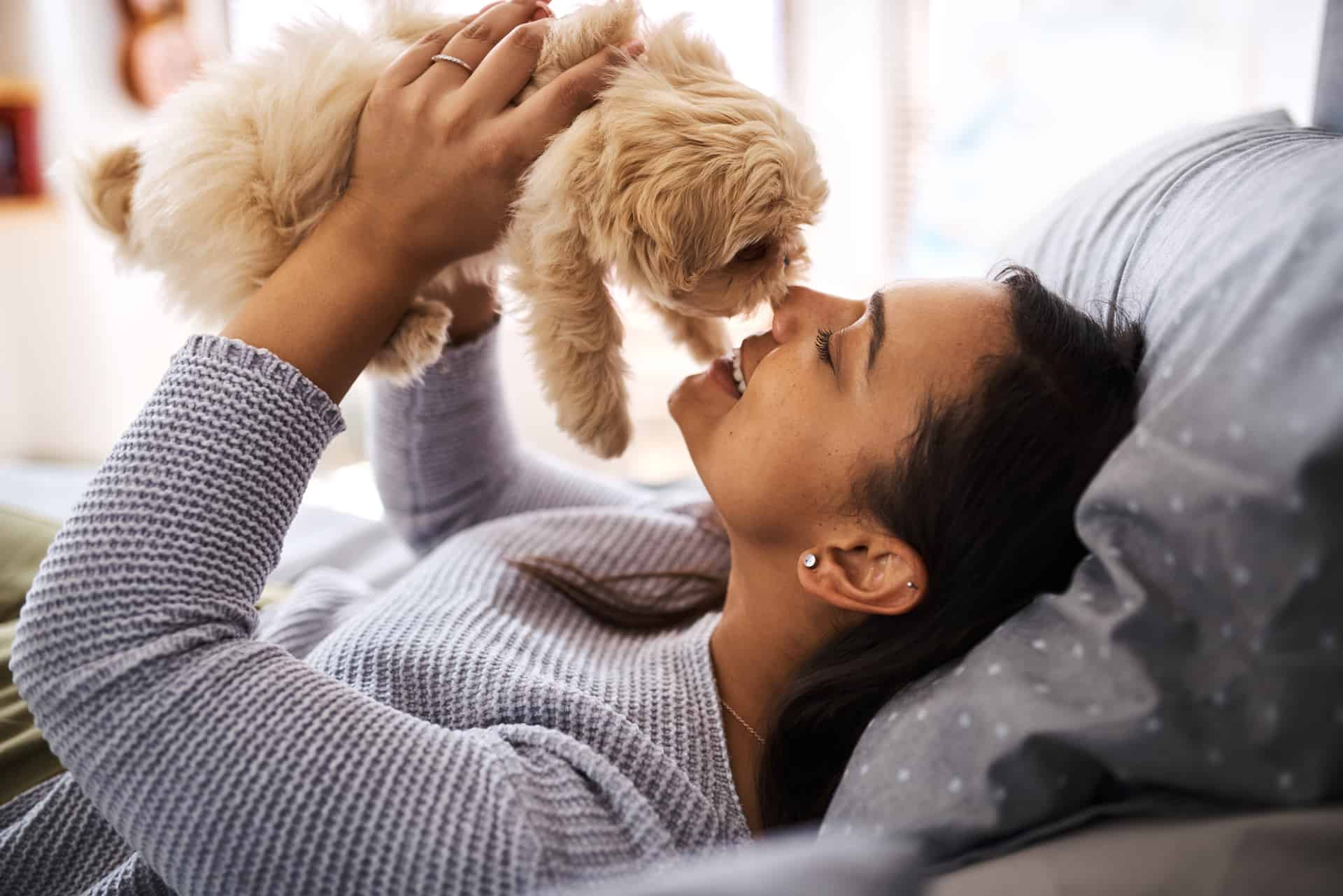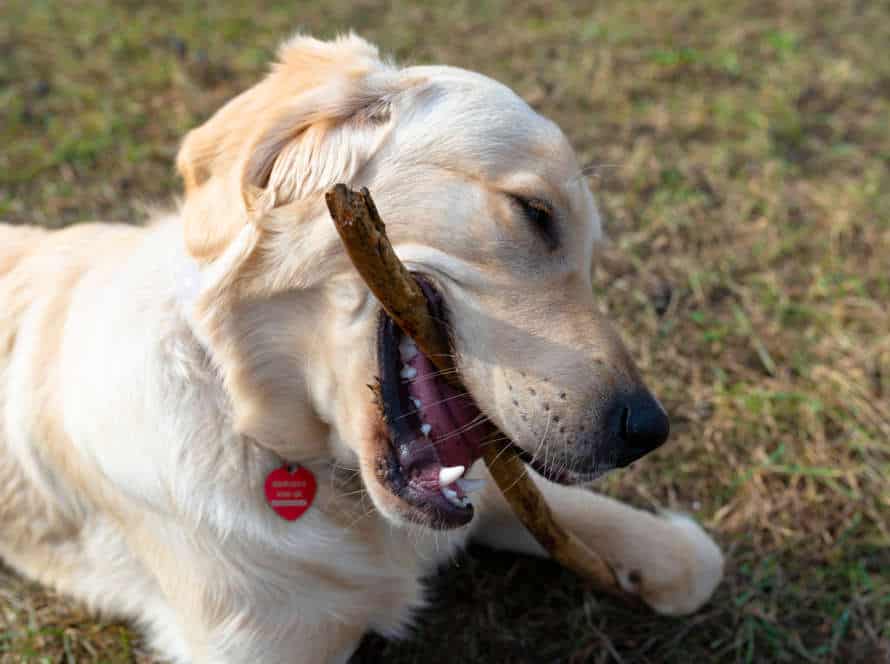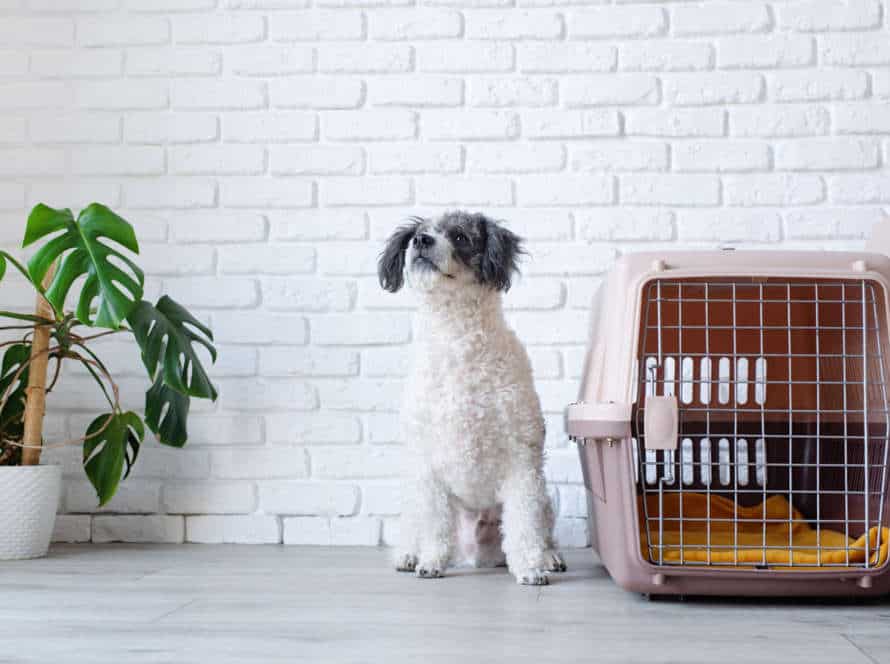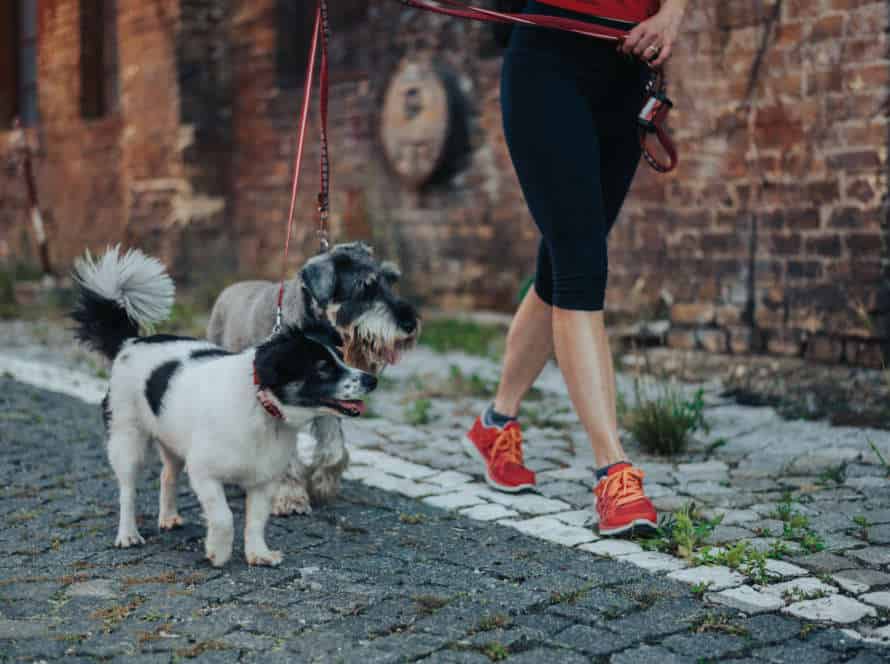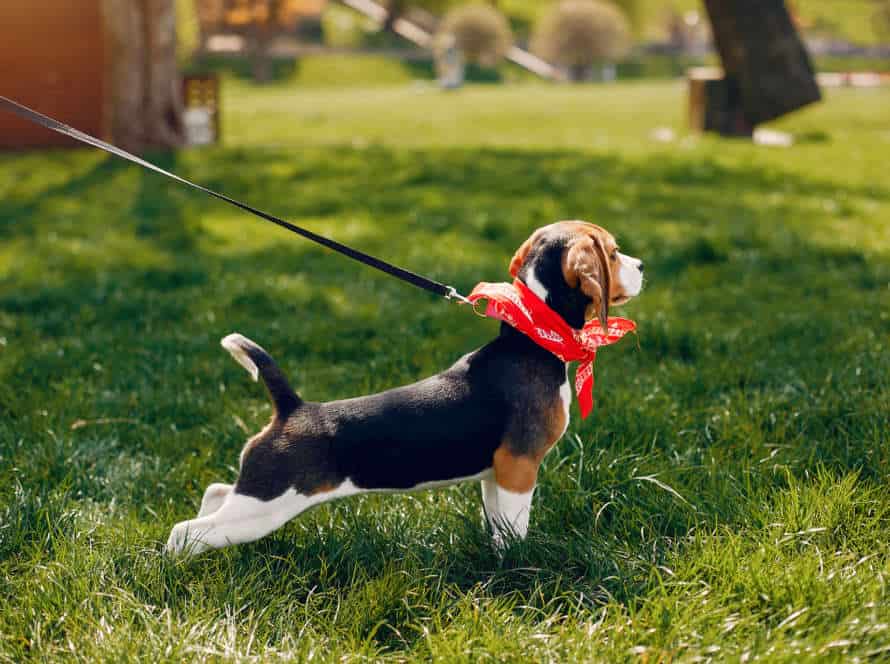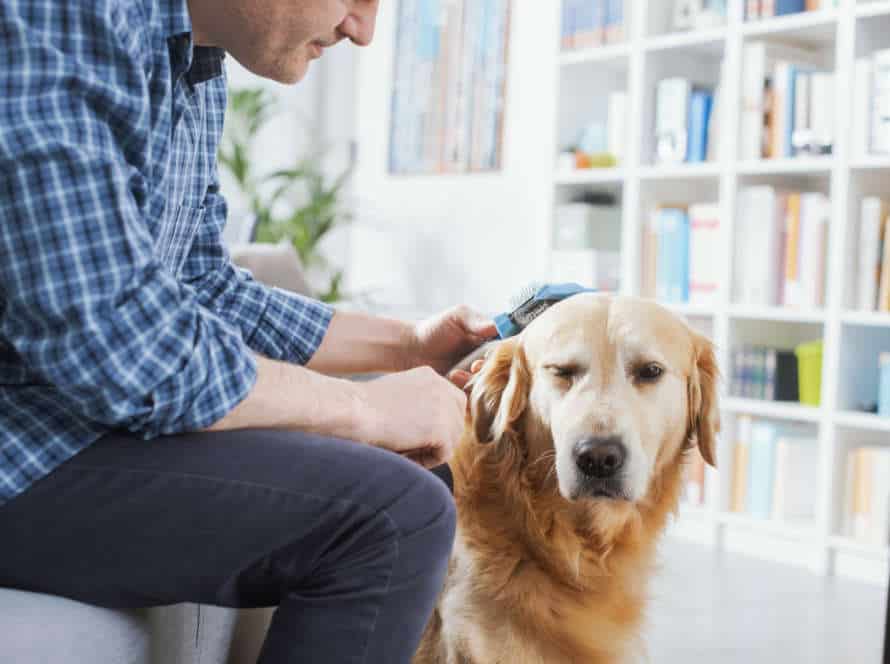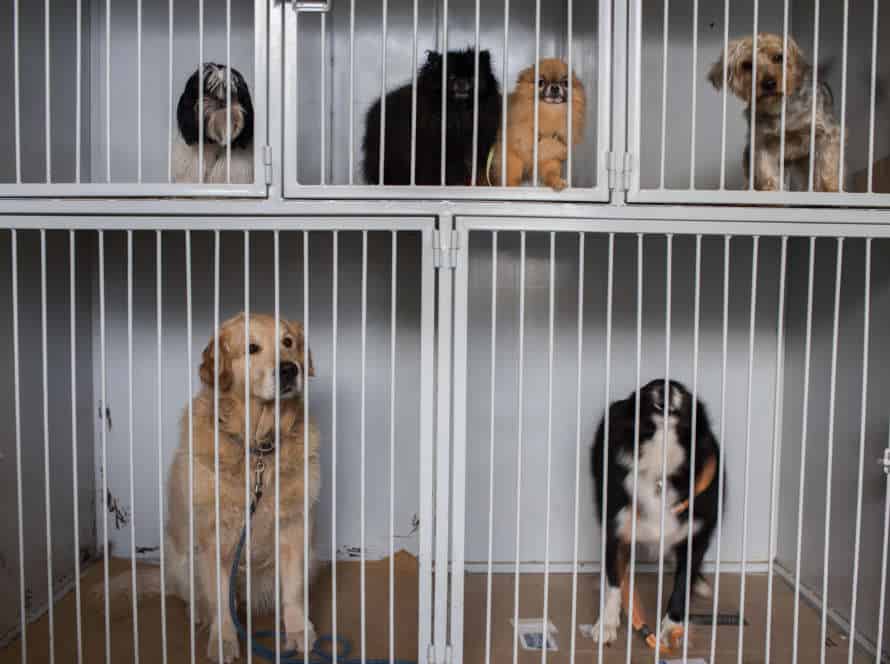Potty Training for Puppies
Potty training a pup? Not so scary! Create a schedule, be consistent and you’ll soon have a pup that goes outside to do their business. Puppies need more frequent potty breaks and patience from you. Get the right plan in place and the important skill of potty training will be learned quickly by your puppy!
What is the ideal age to start potty training?
The ideal time to potty train a pup is 8 weeks. Puppies need more frequent potty breaks due to their smaller bladders. Here’s a sample of how to do it:
- Take pup outside first thing in the morning, after meals/naps, and bedtime.
- Use a consistent command like “go potty” to encourage them.
- Reward with treats/praise once they finish.
- Watch for signs like sniffing, circling, or barking, which means they need to go.
Adult dogs have different needs and schedules for potty training. Consistency and positive reinforcement are essential. Pro tip: Never punish your pet if they have an accident – it will create fear/confusion.
How often should you take puppies out to potty?
Potty training pups needs a consistent and regular routine to form great habits. Typically, puppies need to pee every 30-45 minutes, based on their age, breed, and size. A good tip is to take them outside first thing in the morning and every hour until bedtime.
Here is a standard plan for potty training puppies:
- Immediately after rising, take the pup outside to pee.
- Take the pup out after every meal and snack.
- Outdoors every hour or so through the day.
- Outdoors 15-30 minutes after playtime or excitement.
- Before bedtime and after waking up from naps, take the pup outside.
As the pup gets older, they’ll have better bladder control, and you can slowly extend the time between potty breaks. Adult dogs can usually hold it for 4-8 hours, depending on age and health.
Crate training for successful potty training
Crate training is great for potty training puppies and adult dogs. It gives them a safe, comfy space to relax and sleep. Here are key tips for success:
- Choose the right sized crate – enough room for the pup to stand, turn, and lie down.
- Introduce your pup to the crate gradually, using treats and praise.
- Set up a consistent potty training schedule. Take them to the designated spot regularly – especially after meals, playtime, or naps.
- Never use the crate as punishment.
- With patience, consistency, and positive reinforcement, your pup will learn to associate the crate with safety and comfort. They’ll also develop good potty training habits.
Potty Training for Adult Dogs
Potty training adult dogs can be a challenge. Bad habits may need to be broken and it might take more patience and consistency. But, it’s possible to train an older pup. Here’s how to create a successful potty training schedule for adult dogs:
- Set up a routine.
- Reward good behavior.
- Establish clear rules and stick to them.
- Be consistent and patient.
With the right schedule, an adult dog can learn quickly.
The importance of routine and consistency
Potty training an adult dog needs a consistent routine. This can be tricky, as grown dogs may have different living conditions and habits.
Here’s why routine and consistency are key:
- Predictability – Knowing when and where to go potty reduces inside accidents.
- Reinforcement – Consistent rewards for good potty behaviour encourages more of it.
- Avoiding confusion – Inconsistencies in training can confuse the pup.
Create a regular potty schedule and stick to it. Reward them for using the right spot. Patience and rewards for small victories are key.
How often should you take adult dogs out to potty?
Potty training an adult dog is different than a puppy. They can hold their bladder longer, but need regular breaks. Here’s some tips:
- Establish a potty schedule. Take them out every 4-6 hours during the day. If they have a bigger bladder, you can extend the time.
- Remember to take them out in the morning, after meals and before bed.
- Be patient and consistent. You’ll have a fully trained pup soon!
How to transition dogs from outdoor to indoor potty habits
Transitioning a pup or adult dog from outdoors to indoors for potty habits takes patience and consistency – but it can be done! Here are some tips to help:
- Create a regular potty schedule – this helps regulate the pup’s biological clock.
- Choose one spot in the house for the pup to use as a ‘potty area’, and introduce them to it gradually.
- Reward the pup with treats and praise when they do their business in the designated area.
- Be observant of their behavior and body language, and take them to the designated spot when needed.
For adult dogs, transitioning may take longer than puppies. So be patient and keep to the potty schedule!
Pro tip: Consistency and positive reinforcement are key for successful potty training.
General Tips for Successful Potty Training
Potty training can be tough – both for puppies and adult dogs. Make a plan and stick to it, though, and you’ll succeed! Here are a few tips to help out. They’ll simplify the process and make it more successful.
Positive reinforcement techniques for potty training
Positive reinforcement is ace for potty training pups of all ages. It’s humane, effective – no punishment needed. Here’s how:
- Establish a routine and schedule. Same time, same place. Praise and rewards for successful attempts.
- Use a verbal cue – like “go potty” or “do your business” – so they know what you want.
- Reward them with praise and treats immediately they complete the desired behavior. So they associate it with a positive outcome.
- For puppies, use a crate or limited space to stop them going elsewhere in the house ’til they learn good potty habits.
- Adult dogs may need more patience and persistence. Especially if they have picked up bad habits or are new to positive reinforcement.
- But with consistent routine, patience, and positive reinforcement – potty training can be rewarding for everyone.
Managing accidents during potty training
Accidents during potty training are normal and irritating, but there are ways to handle them! Here are some tips:
- Take your pup out often – after meals, play, and naps – to avoid accidents.
- Reward your dog with treats when they do well.
- Crate train your pet when you’re away or can’t keep an eye on them.
- Clean up any accidents right away with an enzymatic cleaner, so they don’t go back to the same spot.
- Be consistent and don’t punish your pup for any setbacks.
Also, potty training schedules change with age. Puppies need to go out every 30 minutes-1 hour. Adult dogs can wait 3-4 hours.
Signs that your dog needs to go out to potty
It’s essential for dog owners to watch out for signs that their pup needs to potty. Common ones are:
- Whining or barking. This often means they need to go outside.
- Pacing or circling. Time for a potty break!
- Sniffing or scratching at the door. Dogs have a good sense of smell.
- Restlessness or not settling. Another good sign to take them out.
For potty training, consistency and positive reinforcement are key. Puppies need breaks every 1-2 hours. As they get older, extend the time between potty breaks.
Potty Training Challenges and Solutions
Puppies and adult dogs need to be potty trained in different ways. Teaching puppies to control their biological needs is key, while adult dogs will need more guidance to adjust to a new routine. Knowing the differences and being ready for challenges will help you potty train your pup.
Dogs who were previously outdoor potty trained
Previously potty trained dogs may have difficulties transitioning to indoor potty training. However, there are strategies to help.
Solutions to common potty training issues include:
- Keeping dogs on consistent potty schedules to reduce accidents.
- Positive reinforcement for good behavior and redirecting the dog’s attention when accidents occur.
- Creating a comfortable and accessible potty area indoors, as well as using calming aids such as pheromone sprays, music, or scented candles.
Potty schedules differ between puppies and adult dogs:
- Puppies need frequent potty breaks, usually every hour or two during the day, plus overnight.
- Adult dogs can hold it longer, so adjust potty breaks accordingly.
Dogs who have been previously punished for accidents
Dogs that have been punished for potty accidents can present a challenge when it comes to training. It’s vital to take it slow and use patience, consistency, and positive reinforcement techniques. Here are some steps to follow:
- Set up a regular feeding routine and take your dog out after meals and playtime.
- Give your dog a specific spot in the yard and use positive reinforcement to get them to use it.
- Use verbal cues such as “go potty” and reward them with praise, treats, or play when they go in the right area.
- Put your dog in a crate or small space when you’re not around to watch them.
- Clean up any accidents with an enzymatic cleaner to get rid of the odor so they don’t go back to the same spot.
With consistency and patience, any dog can be trained to eliminate in the right area – even if they’ve been punished for accidents before.
Dogs with medical conditions affecting potty habits
Dogs with medical problems causing potty troubles may be tough to potty train.
- Step one: Identify and diagnose the medical issue.
Common medical conditions include:
- Urinary tract infection. Accidents in the house due to needing to pee more or having trouble staying in. Solution: Regular trips outside to pee, plus medication to handle the infection.
- Diabetes. More drinking and peeing, making it difficult to stay inside. Solution: Feeding schedule, outdoor trips, and keeping blood sugar balanced.
- IBD. Needing to go urgently and often, resulting in indoor accidents. Solution: Strict diet for IBD, and following a consistent potty plan outside.
Work with the vet, make a schedule, and accommodate your pup’s medical needs to help them beat the potty training challenges.
Frequently Asked Questions
Q: At what age should I start potty training my puppy?
A: Potty training can begin as early as 8 weeks of age, but the best time to start is between 12-16 weeks when they have better bladder control and are more receptive to learning.
Q: How often should I take my puppy outside to go potty?
A: Puppies typically need to go outside every 1-2 hours, as well as after meals, naps, and playtime.
Q: What is the best way to reward my puppy for going potty outside?
A: Positive reinforcement is key! Make sure to use treats and praise immediately after they go outside as a way to reinforce the desired behavior.
Q: What is the difference between potty training a puppy versus an adult dog?
A: Adult dogs may have already established bad habits, making it harder for them to learn new behaviors. Puppies, on the other hand, are more receptive to training and are easier to mold into desired behaviors.
Q: Can I leave my puppy in a crate all day during potty training?
A: No, puppies should not be left in a crate for more than a few hours at a time. They need plenty of opportunities to go outside and learn appropriate potty behavior.
Q: What if my adult dog is not responding well to potty training?
A: It is never too late to start training your adult dog, but they may require a more disciplined and consistent schedule. Consider working with a professional dog trainer to help modify their behavior.

